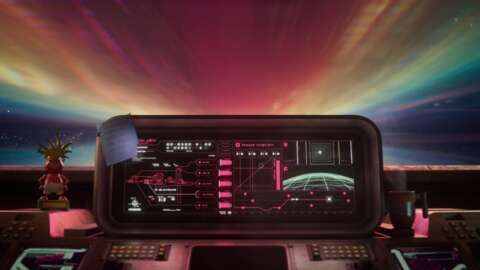The new LEGO Transformers Bumblebee, available exclusively at the LEGO Store, is fun to play with, fun to build, but a bit challenging to transform. This set is the second of its kind; last year, LEGO released a fully transformable Optimus Prime, which could comport itself into a semi-truck with a few twists and rotations.
The Bumblebee set is smaller, with a lower piece count (not to mention a lower price point – $89.99 to Optimus' more expensive $179.99 price tag), but it is no less impressive in its end result. Its "Car" mode looks significantly smaller than its "Autobot" mode, and it reminds me of that old Ringling circus bit, where 30 clowns cram themselves into a single, tiny car. Where does it all go?
Like LEGO Optimus Prime, LEGO Bumblebee is divided into 10 bags of bricks and Technic pieces. You initially built Optimus as an Autobot, and the last several pages of instructions were a how-to manual by transforming it into a semi-truck. With Bumblebee, the process happens in reverse. You build it as a car—a VW Beetle to be precise, although LEGO seems to be avoiding that label for legal reasons. And then, you transform it into an Autobot.
I prefer the Bumblebee order of construction to the Optimus order of construction. Psychologically, it's more impressive to go from the mundane (the vehicle) to the fantastical (the robotic organism), than the other way around. The set, befitting its subject, is predominantly bright yellow. The "adult" sets that LEGO releases (with the notable exception of the LEGO Botanical Collection) tend towards muted, understated colors. It's a visual treat when LEGO works with colors other than beige/brown, blue, black or dark/light gray.

The build is fun with a to-be-expected repetition; you're building two copies of everything— two front fenders (which become two arms) and two rear fenders (which become two legs). I dodged a bit of this repetition by building the set with my nine-year old son in an alternating pattern. But even if you're flying solo, it's not on the level of, say, Captain America's shield, where the tediousness of the repetition competes with the impressiveness of the end result.
So the big question: "How well does LEGO Bumblebee transform?" The answer is very well, but not quite as convincingly as LEGO Optimus did. Bumblebee in Autobot mode still looks vaguely like a car, whereas Optimus Prime looks more distinctive in both his iterations. It's because of the shoulders, which on Bumblebee are high and narrow; the front fenders don't separate very far from the body. For this reason, it's important to "pose" Bumblebee—to angle and crook the arms in a stance or posture—to properly sell the visual effect.

I recently watched a news report about a roller coaster whose support pillar cracked, but continued operating for a short while. The reason why the roller coaster did not kill anyone, despite this catastrophic failure of its integrity, is structural redundancy. A coaster designer would not risk people's lives on the sturdiness of a single element. That way, if one support fails, there are two more supports that accomplish the same task.
LEGO does this with its builds. You end up layering bricks, hinging them on multiple connection points or reinforcing them with pins and hinges, so that even if you were a bit careless with a set, like a kid might be, it would stay together. These Transformers builds are adult builds – there's a 18+ label on the box. But by virtue of their function, they could probably use more reinforcement than the typical "adult" amount.

LEGO Bumblebee is difficult to transform – especially at first – without losing a brick or two in the process. When the designers tell you to bend a flap back one way, they mean ONLY that way. Turn a joint left instead of right, and one single connection point will press against another single connection point and dislodge it. There is very little flexibility in Bumblebee's transformation process – you would not try to "figure it out," as you would with a plastic toy, unless you want to end up with a pile of bricks. Keep the manual, read the instructions, and transform it exactly, in order, step by step.

Or, you can "cheat." What's a little super glue between friends? After transforming it a handful of times, I identified 3-4 weak points on the build, and I reinforced them with a quick drying adhesive and a Q-Tip. Bumblebee hasn't lost a single piece since.
Thanks to a little outside help, he's become an absolute joy to play with. I highly recommend LEGO Bumblebee, on the condition that you're not adverse to a little "Kragle," as The Lego Movie derisively refers to it. Life is too short for clutch power alone.
LEGO Icons Transformers Bumblebee, Set #10338, retails for $89.99 is composed of 950 pieces. It is available now, exclusively at the LEGO Store.
Kevin Wong is a contributing freelancer for IGN, specializing in LEGO. He's also been published in Complex, Engadget, Gamespot, Kotaku, and more. Follow him on Twitter at @kevinjameswong.







